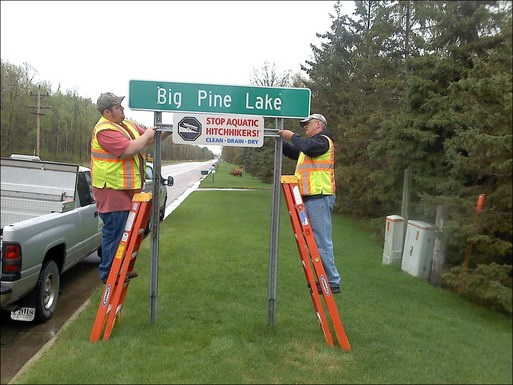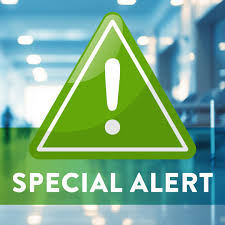NEW FISHING REGULATIONS
BIG AND LITTLE PINE LAKES FOR 2025
With the start of another fishing season, March 1, 2025, the MN DNR imposed long sought after special regulations for Crappie and Sunfish on Big Pine and Little Pine Lakes. On both lakes, daily catch and possession limits for Crappies were reduced from 10 to 5 and Sunfish were reduced from 20 to 10. Signage stipulating to these limit reductions should appear at the lake(s) public access(s) in the near future.
MORE– Pine Lakes Fishing 2025
Do The Right Thing
Together we can prevent the spread of Aquatic Invasive Species
What’s up with the One Watershed One Plan (1W1P)
Over the past several years you may have heard about how local government partners
including Soil and Water Conservation Districts (SWCDs), Counties, and Watershed
Districts have been working together to develop Comprehensive Watershed
Management Plans commonly referred to as One Watershed One Plans. Through this
process, plans drafted identified priority water resource concerns and focus areas for
each watershed. These watershed plans set 10-year goals that if accomplished will help
to improve and/or protect our local water resources. Currently, most of Minnesota’s
watersheds now have approved plans, and the last few have started the planning
process.
1W1P Darren Newville
______________________________
Pine Lakes Improvement District
Big and Little Pine Lake and the respective property owners on the lakes near Perham, Minnesota comprise the Otter Tail County Pine Lakes Improvement District, also know as the LID. A Lake Improvement District is a legally recognized government entity that provides a means by which the property owners can meet and deal with specific needs related to water quality and the lake environment. The Otter Tail County Commissioners approved the LID on August 10, 1999.
The LID has a long history of progressively dealing with water quality issues and the environment. Big and Little Pine Lake Associations were formed in 1979, and began to address water quality issues. In 1991, Big Pine Lake Association commissioned a Lake Assessment Plan. As a result of that assessment plan, conversations began with Little Pine and surrounding area residents regarding the formation of the LID.
One of the first priorities for the LID was a Sustainable Lakes Management Plan which was designed as part of a Board of Soil and Water Grant. The Plan was adopted in 2004 and will be used to guide the activities of the LID. Many of the goals, strategies, and action items in the Plan are a continuation of work that has already begun.
The LID depends on volunteers. Numerous dedicated property owners and others concerned about lake quality have volunteered many thousands of hours to study water quality issues, correct problems, educate property owners, and write grants.
We’re proud of what we have done for our lakes and the environment!


